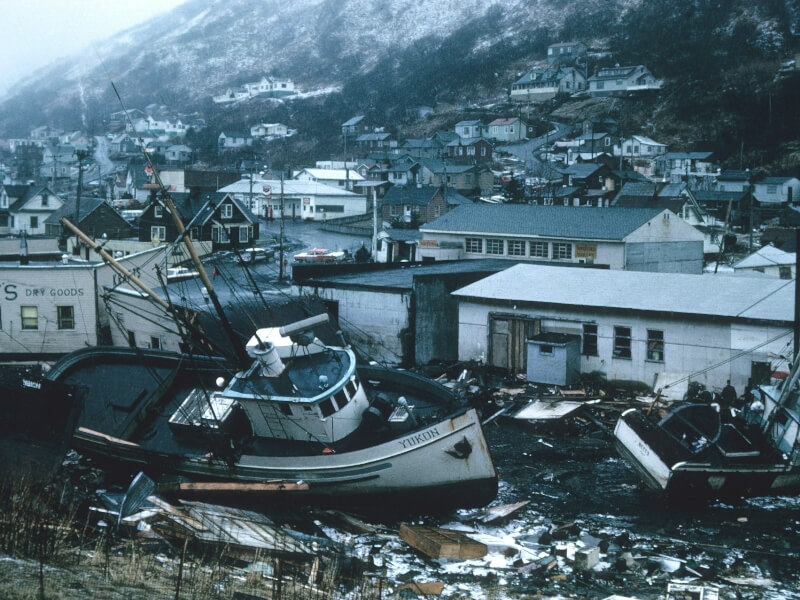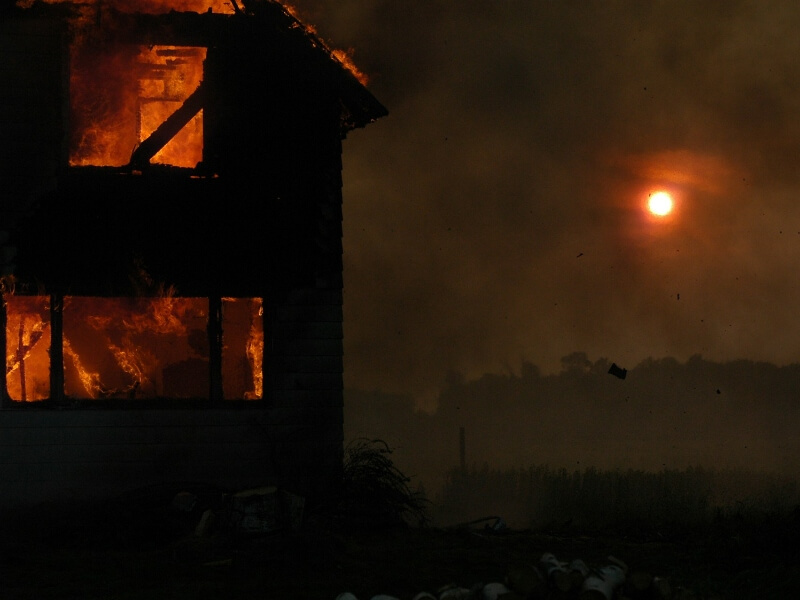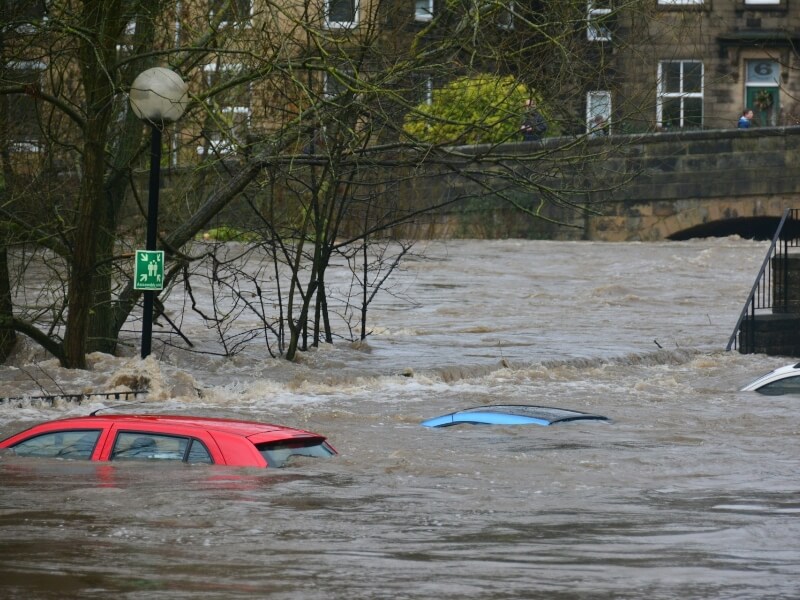SDN has moved again!
Subscribe to our RUMBLE channel
Survivalists subscribe to Murphy’s Law — anything that can go wrong will go wrong. However, the spontaneity factor makes preparing for all imaginable emergencies challenging. Only some disasters are predictable enough in advance that you can still plan your next moves, such as hurricanes and winter storms.
These five disasters can happen anytime, so learn to minimize your losses when you can’t come through them unscathed.
1. Earthquakes

Quake predictions are just estimations because, despite the benefit of modern technology, the U.S. Geological Survey (USGS) still can’t precisely say when an earthquake of what magnitude will hit where. The Big One — a so-called long-overdue magnitude 8.0 quake — has entered the consciousness of Southern Californians since the late ‘80s. Yet, there’s still no sign of it happening soon.
The most logical way to minimize an earthquake’s impact on your property is to build as far away from an active fault as possible. Use the USGS’ interactive tool to determine the nearest active faults from where you live. Also, check your municipality’s building code to know if you must observe a minimum fault setback.
If your home is already standing, seismically retrofit it to increase its resistance to damage when the ground shakes. Foundation reinforcement is an earthquake retrofit example. In addition, an underground bunker can serve as a refuge from quakes and other disasters.
Standard homeowners insurance products exclude quakes as covered perils. Consider buying a separate policy that can provide funds to rebuild your quake-destroyed primary residence up to code, repair outbuildings, replace your affected personal belongings and pay for your living expenses during construction.
2. Volcanic Eruptions
Are you neighbors with a dormant or active lava vent, like the Yellowstone Supervolcano or Kilauea in Hawaii? The danger zone is within a 20-mile radius of a lava vent. However, due to wind, ash could reach places 100 miles away from the eruption.
Although a theoretical house on tungsten or titanium stilts with a tight building envelope, reinforced steep roof and an internal air supply might help you survive a volcanic eruption’s aftereffects, your safest bet is to respect the danger zone and build elsewhere. Instead, focus on neutralizing the rain of abrasive particles following this disaster.
Volcanic ash is a respiratory hazard, causing breathing problems and harming the lungs when inhaled. Stay inside an enclosed space like an airtight structure while riding out the ash fall.
If you must go outside, wear an industrial mask to filter out the ash’s rock, mineral and glass particles. However, this equipment can’t protect you from harmful gasses.
Begin cleanup immediately after the abrasive rain ends. Slightly dampen the ash to aid sweeping. Dispose of it properly to ensure it doesn’t end up in the pipework and eventually pollute public water sources.
3. Tsunamis

These massive waves are as unpredictable as their usual triggers — earthquakes and underwater volcanic eruptions. A giant tsunami can inundate locations more than a mile from the coast, so live inland and on high ground as much as possible.
Moreover, using columns with glass on your home’s ground-level floor instead of solid walls offers a path of least resistance to the deluge. Allowing the rush of seawater to pass through the house reduces its chances of collapsing.
As with earthquakes, homeowners insurance providers generally don’t cover tsunamis — flood insurance vendors might. Do your research to ensure your chosen policy includes tsunami-caused flooding to properly bridge your coverage gap.

4. House Fires
Fire is a disaster that can spread throughout a house in seconds. Houses with combustible materials ignite faster, so be mindful of what to use when building yours.
Heavy use of masonry and concrete, chemically treated timber, and fibers such as cotton and wool can boost your property’s fire protection. Install fire-rated solid doors and glazed windows to contain flames in one area for a certain period, rendering them isolated and more manageable to extinguish.
Getting insured goes without saying to finance your fire-ravaged home’s reconstruction and your family’s temporary housing needs should your primary residence be unfit for habitation.
Your insurer must find a unit that matches your primary residence. For example, if you live in a 1,400-square-foot house with two bedrooms, your homeowners insurance carrier must rent a two-bedroom property with similar square footage.
Before enjoying these entitlements, you must prove your house fire is accidental. Compared to other perils, it’s easier to stage. Insurers do their due diligence to unearth signs of arson.
Furthermore, neglect can jeopardize your claim. The insurance adjuster must see that you observed basic fire safety, such as fixing any pre existing damage that could aggravate the fire and leaving repairs to qualified professionals to prevent faulty workmanship.
5. Flash Floods

Weather forecasters can anticipate when the conditions will be ripe for flash flooding. However, the actual inundation can occur without warning.
If you can’t live outside a location with high flood risk, like a low-lying or coastal area, optimize your landscape design to keep water at bay. Best practices include:
– Slightly grading your yard to divert water away from your foundation.
– Planting native trees to absorb water and stabilize the soil.
– Using permeable hardscaping materials to delay flood peak.
– Installing drainage grates at your driveway’s lowest points to control runoff.
– Having a rain garden to contain floodwater in a single location.
– Leverage new grass and organic mulch to mitigate runoff.
If you have a basement, install a sump pump and keep it in good working condition to collect and safely dispose of the sub-surface water accumulating near your foundation.
Flood insurance may be optional if you live outside of a high-risk area. Still, consider buying a policy anyway because there’s at least a 25% chance of you experiencing flooding before you pay off your mortgage.
Prudence Beats Spontaneity
Recovering from any disaster is never easy. Thankfully, you can dramatically reduce your exposure to risk by reinforcing your home, keeping it in good repair and having ample insurance.
=====
Become a Survival Dispatch Insider …
We bring together survival enthusiasts and preppers to share skills and knowledge, so you can enhance your preparedness for emergencies and ensure the safety of you and your community.
The Results You’ll Get …
Our community, courses, and memberships are pretty special. We focus on the ways it will make a huge difference in your life.
Here are a few of the things you’ll be able to do as a member of Survival Dispatch Insider …
1) Improve your emergency preparedness by learning survival skills and strategies from experienced preppers.
2) Build lasting connections with like-minded individuals that share your passion for safety and readiness.
3) Access a wealth of knowledge and resources to assist in protecting you and your community during unexpected situations.
Click HERE to get started.
=====
